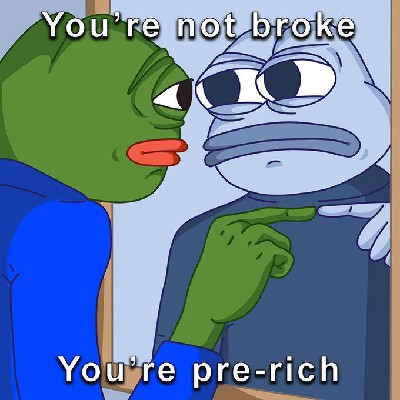
TerraClassicUSD priceUSTC
USTC/USD price calculator
TerraClassicUSD market Info
Live TerraClassicUSD price today in USD
Do you think the price of TerraClassicUSD will rise or fall today?
Now that you know the price of TerraClassicUSD today, here's what else you can explore:
How to buy TerraClassicUSD (USTC)?How to sell TerraClassicUSD (USTC)?What is TerraClassicUSD (USTC)What would have happened if you had bought TerraClassicUSD (USTC)?What is the TerraClassicUSD (USTC) price prediction for this year, 2030, and 2050?Where can I download TerraClassicUSD (USTC) historical price data?What are the prices of similar cryptocurrencies today?Want to get cryptocurrencies instantly?
Buy cryptocurrencies directly with a credit card.Trade various cryptocurrencies on the spot platform for arbitrage.TerraClassicUSD price prediction
When is a good time to buy USTC? Should I buy or sell USTC now?
What will the price of USTC be in 2026?
In 2026, based on a +5% annual growth rate forecast, the price of TerraClassicUSD(USTC) is expected to reach $0.007796; based on the predicted price for this year, the cumulative return on investment of investing and holding TerraClassicUSD until the end of 2026 will reach +5%. For more details, check out the TerraClassicUSD price predictions for 2025, 2026, 2030-2050.What will the price of USTC be in 2030?
About TerraClassicUSD (USTC)
What Is TerraClassicUSD?
TerraClassicUSD (USTC) is a decentralized algorithmic stablecoin pegged to the US dollar, operating on the Terra Classic blockchain. Originally known as TerraUSD, it was rebranded to TerraClassicUSD following the collapse of the Terra ecosystem in 2022, which led to the depeg of the token. TerraClassicUSD was conceived to meet the demands of various DeFi protocols, offering scalability, security, and interoperability with other blockchains without compromising speed.
USTC was launched in September 2020 in collaboration with Bittrex Global, a cryptocurrency exchange. It integrates seamlessly into crypto wallets and payment systems and can be utilized for minting synthetic assets or tracking real-world asset prices on DApps like Mirror Protocol. Despite its advantages, USTC faces challenges such as potential deviations from its peg due to market fluctuations and competition from other stablecoins like USDT, USDC, and DAI.
Resources
Whitepaper: https://assets.website-files.com/611153e7af981472d8da199c/618b02d13e938ae1f8ad1e45_Terra_White_paper.pdf
Official Website: https://www.terra.money/
How Does TerraClassicUSD Work?
TerraClassicUSD operates through a unique “mint and burn” algorithm involving USTC and its native asset, Luna Classic (LUNC). When USTC’s price is below $1, users can burn 1 USTC to mint $1 worth of LUNC, and when USTC’s price is above $1, users can burn $1’s worth of LUNC to mint 1 USTC. This algorithm aims to maintain price stability through arbitrage trading efforts controlling the supply and demand of USTC and LUNC.
The Terra Classic blockchain, introduced in April 2019 by Terraform Labs, was designed to establish a global payment system driven by fiat-pegged stablecoins backed by a floating-rate cryptocurrency, Luna Classic (LUNC). It utilized smart contracts to mint and burn stablecoins like USTC in response to supply and demand fluctuations, with Luna Classic absorbing the stablecoins' price volatility and acting as collateral and a governance token.
However, in May 2022, Terra Classic suffered a catastrophic collapse when USTC lost its peg to the US dollar, leading to a severe sell-off of USTC and hyperinflation and devaluation of LUNC. This event prompted the creation of a new chain called Terra (LUNA) with new tokenomics and governance to prevent such disasters, and the original Terra chain was rebranded as Terra Classic.
What Is TerraClassicUSD Token?
USTC, the token representing TerraClassicUSD, is a crucial component of the Terra Classic ecosystem, serving as a medium of exchange and a pricing benchmark for decentralized applications. Despite the challenges faced by the Terra Classic blockchain, USTC continues to be a significant player in the crypto market, offering users the ability to earn interest by staking their tokens on platforms like Anchor Protocol and facilitating asset and token transfers, transactions, and smart contract interactions through various wallets and protocols.
USTC does not have a maximum supply because its supply and price are controlled by the reserve and algorithms. USTC’s circulating supply as of this writing is 9,787,880,337.
TerraClassicUSD's Impact on Finance
TerraClassicUSD has had a profound impact on the world of decentralized finance (DeFi) by providing a scalable and yield-bearing stablecoin option in the crypto market. Its algorithmic design and interoperability with other blockchains have allowed it to meet the demands of various DeFi protocols without compromising speed or security. However, the risks and vulnerabilities associated with Terra Classic and LUNC highlight the challenges and uncertainties inherent in the rapidly evolving world of blockchain and cryptocurrency.
What Determines TerraClassicUSD's Price?
The price of TerraClassicUSD (USTC), like other cryptocurrencies, is fundamentally influenced by various factors in the cryptocurrency market. Market supply and demand dynamics play a pivotal role in determining the price of this token. When the demand for USTC increases, perhaps due to positive cryptocurrency news or favorable cryptocurrency trends, the price is likely to rise. Conversely, if the supply of USTC exceeds demand, possibly due to adverse cryptocurrency regulation or negative market events, the price is likely to fall. Cryptocurrency enthusiasts and the crypto community closely monitor these dynamics, utilizing cryptocurrency analysis and cryptocurrency charts to make informed predictions and decisions.
Cryptocurrency experts and influencers often delve into extensive crypto market analysis to forecast the potential price movements of tokens like USTC, considering factors like cryptocurrency security, risks, and market volatility. These analyses often lead to varied cryptocurrency price predictions for 2023 and beyond, aiding both beginners and seasoned investors in shaping their cryptocurrency trading strategies and crypto portfolio management. For those looking to buy USTC, it can be acquired on leading exchanges such as Bitget, where users can analyze the cryptocurrency market trends and make the best crypto investment for 2023 based on informed decisions. Whether USTC is a good investment or not largely depends on individual risk tolerance, investment goals, and the ever-evolving landscape of cryptocurrency adoption and development.
Bitget Insights




USTC/USD price calculator
USTC resources
What can you do with cryptos like TerraClassicUSD (USTC)?
Deposit easily and withdraw quicklyBuy to grow, sell to profitTrade spot for arbitrageTrade futures for high risk and high returnEarn passive income with stable interest ratesTransfer assets with your Web3 walletHow do I buy TerraClassicUSD?
How do I sell TerraClassicUSD?
What is TerraClassicUSD and how does TerraClassicUSD work?
Global TerraClassicUSD prices
Buy more
FAQ
What is use case of TerraClassicUSD?
Is TerraClassicUSD a good investment?
Can I mine TerraClassicUSD?
What are the differences between TerraUSD (UST) and TerraClassicUSD (USTC)?
What happened to TerraUSD (UST)?
What is the history of TerraClassicUSD?
What is the current price of TerraClassicUSD?
What is the 24 hour trading volume of TerraClassicUSD?
What is the all-time high of TerraClassicUSD?
Can I buy TerraClassicUSD on Bitget?
Can I get a steady income from investing in TerraClassicUSD?
Where can I buy TerraClassicUSD with the lowest fee?
Related cryptocurrency prices
Prices of newly listed coins on Bitget
Hot promotions
Where can I buy TerraClassicUSD (USTC)?
Video section — quick verification, quick trading









